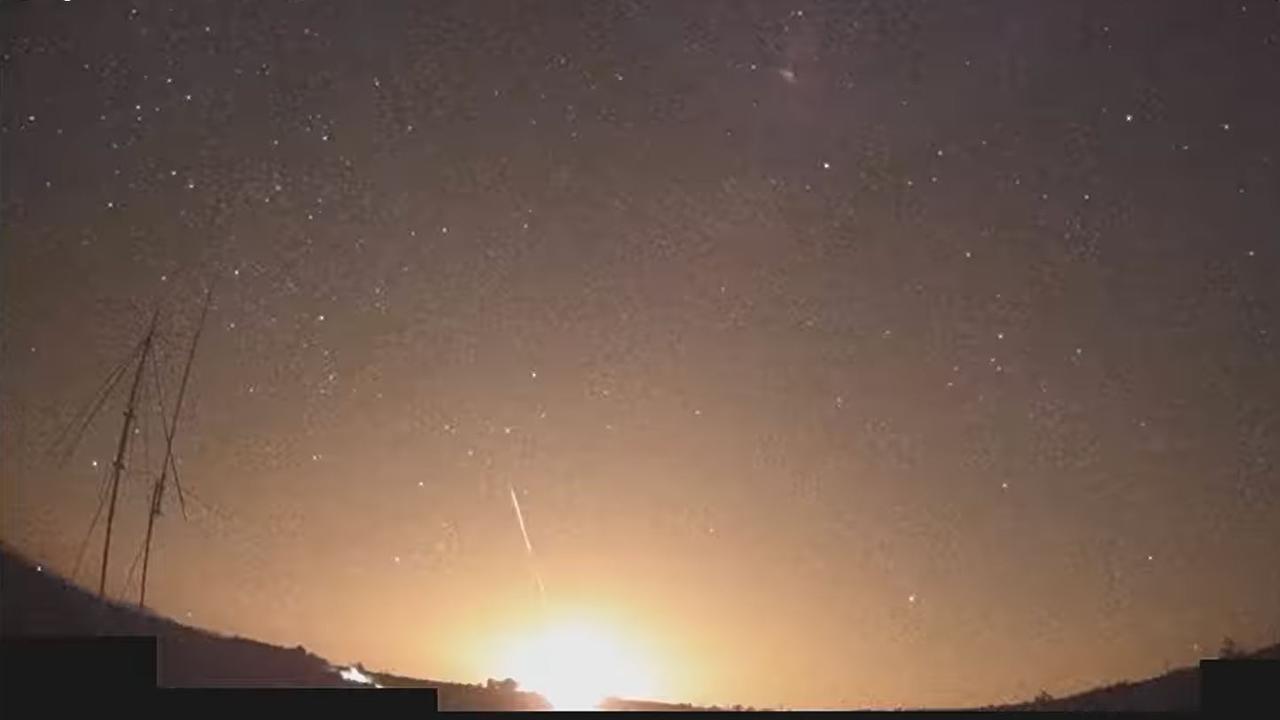Everything you need to know about Queensland meteor strike
Wondering whether Brisbane might be at risk after the weekend meteor strike in the state’s far north? We’ve asked an astrophysicist just what it may mean for Queenslanders.
QLD News
Don't miss out on the headlines from QLD News. Followed categories will be added to My News.
On Saturday evening a meteor landed in North Queensland, sparking an online frenzy over where it may have landed.
We’ve spoken to Dr Michael Cowley, astrophysicist and lecturer at the Queensland University of Technology on what this meteorite landing may mean for Queenslanders and just where experts believe it may have landed.
Can I sell the meteorite?
If you’ve managed to locate the meteorite you’re out of luck.
According to the Queensland Government Fossicking Rules and Responsibilities you are not allowed to collect meteorites.
You can however effectively have it on display in your backyard (if it landed there) but you’re not allowed to touch it.
In Western Australia you can collect the meteorite … but even if it lands in your yard it belongs to the State Government and must be handed over.

Where do you think Saturday evening’s meteorite may have landed?
The International Meteor Organisation (IMO) received six reports on Saturday evening from North Queensland, with sightings ranging from Townsville to Port Douglas.
“IMO’s estimated trajectory of the event points it towards Claraville in the Shire of Croydon in North Queensland,” Dr Cowley said.
“I’ve seen from a colleague at Australian National University that the meteor was likely ‘between 0.5 and 1 metre in size’.
In most cases, a meteor this small would burn up in our atmosphere, creating the stunning light show, however, if it was made of dense material, there’s a chance of surviving the entry and landing on Earth as a meteorite.”

How often do meteors land in Queensland?
While many enter the atmosphere above Queensland every year, not many actually make contact with the Earth.
“The number of those that strike the Earth (known as meteorites) is likely very small. Most small meteors fully burn up in the atmosphere and do not reach the ground,” Dr Cowley said.
Could a meteorite land in Brisbane?
Not very likely, according to Dr Cowley.
“IMO provides records of sightings within Australia, and the numbers are low (about 2 or 3 per year for the entire country),” Dr Cowley said.
“While it’s difficult to tell the number that reach the ground, we could do some very rough estimates.
“I have seen claims that the Earth is hit by about 17 meteors, on average, per day. For Australia (about 1.7% of the Earth’s total area), this works out to be about 0.3 per day or about 100 per year.
“For Brisbane (about 0.2% of Australia’s total area), this works out to be 0.2 per year or 1 every five years. Even with these very rough estimates, the chances are quite low.”

Should we be concerned about a meteor landing in Queensland?
“The chances of such an event causing significant harm or damage are exceedingly low. The vast majority of meteors burn up in our atmosphere and never reach the ground as meteorites,” Dr Cowley said.
Has there ever been significant damage caused by a meteorite in Queensland?
“Not to my knowledge,” Dr Cowley said.
“A well-known event, the Chelyabinsk meteor, entered the atmosphere over Russia a little over a decade ago.
“While I’m not aware of any deaths, I know significant damage was reported. This event served as a wake-up call and since then, more efforts have been placed on tracking near-Earth objects (NEOs) that could potentially pose a threat us.”
More Coverage
Originally published as Everything you need to know about Queensland meteor strike








